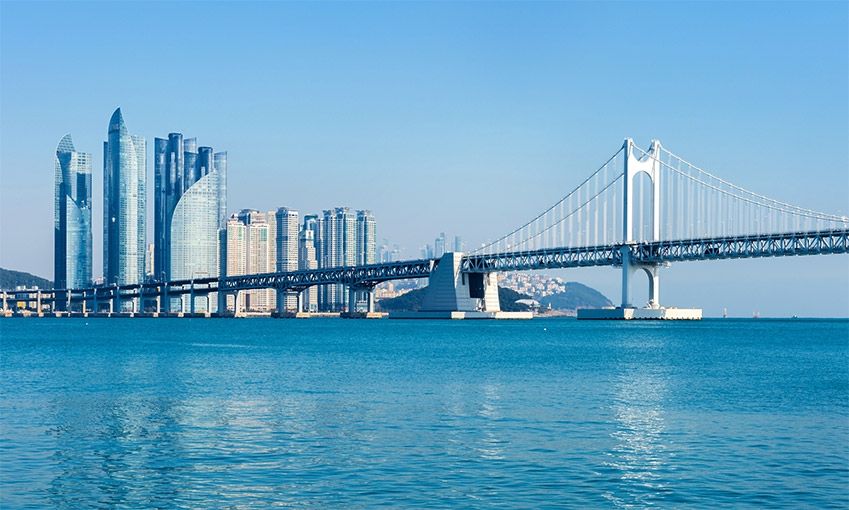
Between China and the US, South Korea still needs the benefits of globalisation
At a meeting in Busan (South Korea) on 26 November – the first since 2019 – the Chinese, South Korean and Japanese foreign affairs ministers announced the resumption of three-way talks aimed in particular at keeping tensions in the South China Sea and with North Korea in check.
While China’s return to this cooperative effort is a surprise, the rapprochement between South Korea and Japan is now evident and has strengthened further since conservative Yoon Suk Yeol’s election as South Korea’s president. At Camp David in August, the two countries signed a cooperation agreement with the United States that calls for joint military manoeuvres, exchanges between intelligence services and trilateral meetings.
This easing of tensions in Busan, building on the Xi-Biden meeting in San Francisco, is not enough to call into question the rapprochement between South Korea and Japan – something Washington is keen on but which Beijing takes a dim view of. It does, however, point to the unique role played by South Korea – a country that has built its prosperity on trade, and thus on the benefits of globalisation that are now in doubt – in this region and this network of alliances.
South Korea’s growth model challenged by trade tensions
South Korea belongs to the very small club of countries whose rapid growth has propelled them from being developing economies to becoming advanced economies in under 50 years.
Thanks to its growth model, based on openness to international trade combined with specialisation in certain high value-added sectors (such as electronics, semiconductors and automotive), it has been able to build up current account surpluses, attract foreign direct investment and share out the benefits of growth to create a middle class that supports consumption.
It is this balanced model that enabled the country to get through the Covid crisis without going too far into recession, benefiting from a sustained recovery in international trade, particularly in terms of demand for electronic goods, and thus for semiconductors.
In 2022, however, as energy prices rose, international trade declined, tensions mounted and monetary policy tightened significantly, weaknesses in South Korea’s economy resurfaced, starting with its dependence on foreign trade.
Following a supercycle in 2020-2021, a slump in semiconductor exports together with rising oil prices – the country’s leading import – put both its trade balance and its currency under pressure. Its cumulative trade deficit widened to $70 billion in May 2023, also putting pressure on the Korean won, which fell 20% against the US dollar in 2022 before regaining in value.
In response to a rapid rise in prices, which had spread to core inflation, South Korea’s central bank had raised interest rates seven times between January 2022 and January 2023, hiking them from 1.25% to 3.5%, double the historical pre-Covid rate. Lastly, growth had also slowed sharply, falling from 3.1% in Q3 2022 to less than 1% in Q2 2023 as a result of the negative contribution of foreign trade and lacklustre consumer spending, hit by inflation.
From the third quarter onwards, though, the outlook seems to have brightened for South Korea. Inflation has already slowed sharply. While core inflation remains unusually high for the country (coming in at 3.6% year on year in October), the pace of inflation suggests that monetary policy should be gradually loosened, perhaps – depending on US choices – starting in the second half of 2024 so as not to expose the country to sudden movements of capital like those seen in 2022.
Exports have also improved, up 5.1% year on year in October after a year of consecutive monthly declines. The trade deficit is thus gradually consolidating: in October, it stood at $40 billion. While the contribution of consumption to growth remains neutral for the time being, it should gradually improve in 2024, with grow set to reach 2.3%.
As a very open economy that is highly dependent on commodities, South Korea has borne the full brunt of external constraints that appeared in 2022: higher energy and agricultural prices caused by the Russian invasion of Ukraine, monetary tightening, currency depreciation against the dollar and slowing global demand. All in all, the economy has withstood this series of shocks pretty well. Growth has admittedly slowed but should stay above 1% in 2023, putting the country behind the US but ahead of the eurozone. Above all, final quarter statistics indicate that the recovery, far from slackening, is consolidating thanks to improving terms of trade: industrial production moved back into the black in October and PMI numbers remain on the right track.
Against this backdrop, having built its growth and development on the benefits of globalisation and trade integration in Asia, South Korea has everything to gain from an easing of tensions. While the meeting in Busan was meant to signal such an easing, it fell far short of addressing either the profound differences between the parties or South Korea’s worries about China’s position in the South China Sea and support for the North Korean regime.







